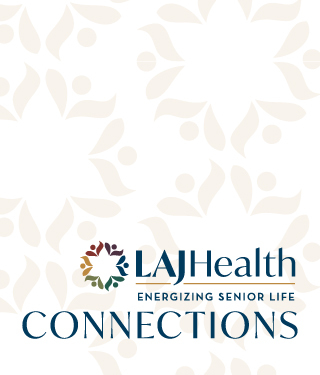Los Angeles Jewish Home Leverages New Technology to Enhance Resident Care


Los Angeles Jewish Home Leverages New Technology to Enhance Resident Care
The Los Angeles Jewish Home has long been an innovator at the forefront of emerging trends in senior care. This spring, that tradition of trailblazing continues with the rollout of new telehealth technology designed to transform the patient experience.
With the acquisition of nearly 20 state-of-the-art mobile telehealth carts, many Jewish Home residents can now access high-quality care without leaving the comfort of a Jewish Home campus. The carts enable residents, supported by their Jewish Home care team, to connect directly with physicians via video; during each visit, doctors can utilize the sophisticated technology to monitor pulse, heart and lung sounds – essentially, conducting a comprehensive visit virtually.
"Thanks to this remarkable tool, doctors can look closely at a resident's skin, ears, nose, and mouth, and listen to their heart and lung sounds in a way that is much more patient-centered," says Noah Marco, MD, the Jewish Home's Chief Medical Officer. "With in-person physician visits, residents have to disrupt their daily routines to do what's convenient for the doctor. Our telehealth option streamlines things considerably and eliminates the stress for residents of arranging transportation and finding someone to accompany them to a medical office. It's also wonderful because it allows authorized family members to participate in the visits live, from anywhere in the world: All they need is a smart phone to join. Since family members can be such important members of the care team, this is a fantastic development."
At the Jewish Home, the telehealth carts are being used for several types of routine and scheduled appointments, as well as for more pressing visits when a resident experiences a change of health condition. In all cases, use of the carts is optional and requires resident consent. It is also HIPAA compliant, providing a safe, secure, and private line of communication for residents and their physicians.
"There are so many benefits to telehealth, the way we're doing it at the Jewish Home," Dr. Marco says. "Often, when a resident has a change of condition, I'll get a phone call from one of our excellent nurses, who will explain to me what's going on. However, the challenge is that over the phone, I don't have a visual. I can't listen to the patient's heart or lungs, and I can't ask them questions. With telehealth, I'm able to hear directly from the resident, and I see live video. I can even do an examination with my digital stethoscope. These things all increase my confidence that I'm making the right diagnosis and ultimately reduces the need to send our residents to the hospital."
There is also, notes Dr. Marco, another significant benefit of supplementing care with telehealth. "In addition to meeting patients' needs in a better, more efficient, and convenient way, telehealth helps reduce our nurses' stress and increase job satisfaction," he says. "Given the challenges nurses face today, with all the demands from COVID and so many other factors, it's vital we invest in technology that minimizes strain on them while improving overall clinical care."
The embrace of telehealth technology accelerated nationwide during the pandemic, when stay-at-home orders and quarantines made venturing out in public more difficult, especially for seniors, whose less robust immune systems increase their vulnerability to illness. Bringing the technology to the Jewish Home was made possible by generous grant support from the Federal Communications Commission (FCC) and numerous nonprofit foundations including the Ahmanson Foundation, the Max Factor Foundation, and the Jewish Community Foundation of Los Angeles.
Currently, the telehealth carts are deployed across the Jewish Home's Grancell Village campus: on the two main floors of the Mark Taper Building, in the Joyce Eisenberg-Keefer Medical Center, and in the Brandman Centers for Senior Care, a Program of All-inclusive Care for the Elderly (PACE). Ultimately, plans call for expanded distribution across all Jewish Home facilities.
"This is a pilot program, so it's still new, but we saw the value in it immediately. The first time we used the cart, the doctor and nurse made a treatment plan for the resident being seen, based on data captured by the technology. Both caregivers felt that, without this technology, the resident would have needed to be transferred to an ER," Dr. Marco says. "Every time we're able to help keep our residents safe and comfortable where they are, it's a big win."